In today’s automotive landscape, flashy infotainment systems, aggressive styling, and high-horsepower engines tend to dominate the conversation. The auto industry invests billions into features that catch the eye and dazzle the senses.
Yet, for many drivers, what matters most during the daily grind or long road trips isn’t the 0–60 time or how many screens are inside the cabin—it’s how the seat feels after two hours behind the wheel. Comfort, especially in terms of seat design and ergonomics, remains one of the most crucial yet underrated aspects of any car-buying decision.
In the sedan segment—traditionally viewed as the benchmark for ride quality and interior refinement—seat comfort has become not just a luxury but a necessity.
Two key seat features have risen in importance among discerning drivers and passengers alike: leg extension capability and flat cushion design. These are not frivolous amenities or tech novelties. They directly impact posture, circulation, pressure point relief, and ultimately fatigue on both short and extended journeys.
A well-designed leg extender (often known as a thigh support extender) can make a world of difference, particularly for taller individuals whose knees often ride high in standard seats. Meanwhile, flat seat cushions offer unrestrictive support and are especially appreciated by drivers who dislike aggressive bolstering or who have joint and mobility concerns.
As automotive seating has trended toward sportier, more sculpted forms, many comfort-centric drivers have found themselves left out of the equation. Deep bucket seats with narrow bolsters may hold a driver in place during spirited driving, but they often compromise on long-term comfort and are unforgiving for people with wider frames or orthopedic conditions.
On the other hand, flat cushions—which used to be standard fare in older sedans—are now a rare breed, but still provide unmatched versatility and comfort across a wider range of body types.
This article is divided into two thoughtful parts to address these critical but often overlooked needs. Part 1 will explore five sedans with exceptional leg extension seat features—vehicles designed to offer deep thigh support and customizable seating geometries that cater especially well to long-legged drivers.
These sedans have taken cues from high-end comfort engineering, often incorporating powered thigh extensions, enhanced lumbar support, and highly adjustable seat platforms to ensure a tailored, posture-perfect fit. Some are luxury entries, while others come from mainstream brands that simply nailed the formula.
Part 2 will focus on five sedans that feature flat seat cushions, a design philosophy that emphasizes simplicity, openness, and all-day seating ease. These are the sedans that reject the race-car aesthetic in favor of broader, less-contoured seating surfaces that are accessible to all body types.
Whether you’re a daily commuter, rideshare driver, or someone who frequently hauls passengers, these flat cushions provide comfort without judgment—no pinching, no squishing, no stiff sidewalls pushing in on your thighs.
By highlighting vehicles in both categories, this guide aims to help drivers make a more informed decision that prioritizes health, comfort, and real-world practicality over style-driven ergonomics.
After all, driving is an experience measured in hours, not horsepower. When your car seat supports you correctly—when your thighs are fully rested, your legs have room to extend, and your hips are cushioned in a non-restrictive way—everything else about the journey becomes more enjoyable.
Whether you’re tall and need extra legroom support or simply someone who values an open and flat seating position, there’s a sedan out there engineered with your needs in mind. You just have to know where to look—and that’s exactly what this article will help you do.
Also Read: 10 Cars With Best Dash Designs That Bring Innovation
5 Sedans with the Best Leg Extension Seats
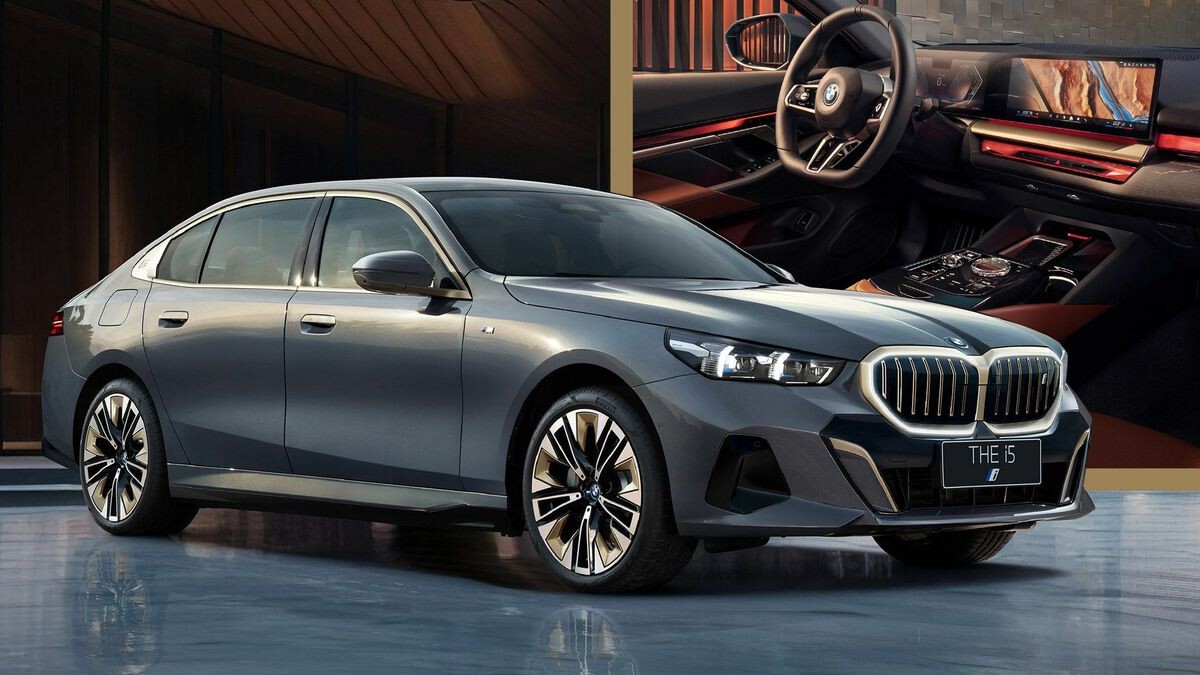
1. BMW 5 Series
The BMW 5 Series is widely regarded as the quintessential executive sedan, and much of that praise comes from its deep commitment to driver-centric comfort.
With every generation, BMW refines the ergonomics of this vehicle, and the inclusion of extendable thigh support for the front seats demonstrates their understanding of real-world comfort challenges, especially for taller drivers.
Available in the Luxury and M Sport trims, the multi-contour seats offer thigh extenders that slide forward to support the lower thighs, preventing the all-too-common sensation of pressure buildup or leg fatigue.
What separates BMW’s leg extension design from others is the seamlessness of its integration. Unlike awkward flap-style extenders that feel like an add-on, BMW’s system slides out smoothly and matches the seat’s cushion firmness.
It doesn’t feel like a segmented piece, and it adjusts in tiny increments, allowing precise personalization. This becomes particularly useful for drivers who spend a lot of time behind the wheel, such as sales executives or highway commuters.
Beyond leg support, the seat package includes up to 20-way adjustability, letting users adjust everything from shoulder support and side bolsters to seat base tilt and backrest width.
The leg extender works in concert with these adjustments to create a truly tailored fit. Whether your legs are long or short, or your posture is upright or laid back, the 5 Series lets you create a driving throne that’s uniquely yours.
The material quality enhances the seat comfort further. BMW offers different leather grades like Sensatec, Dakota, and Nappa, all of which are supple and breathable. The foam used in the thigh extender area doesn’t degrade over time, which is a flaw often seen in lower-quality vehicles.
Even after tens of thousands of miles, users report that the extender remains firm and supportive, showing that BMW has engineered this detail for the long haul. For driving enthusiasts, the added thigh support isn’t just about comfort—it helps with control.
By anchoring your legs more securely, it reduce shifting and fatigue during spirited drives or emergency maneuvers. This mechanical advantage adds another layer of value to what is already a performance-minded vehicle.
Finally, when paired with BMW’s iDrive interface and driver assistance features like adaptive cruise control, the leg extension enhances the overall sense of “luxury meets functionality.” The 5 Series doesn’t just give you a place to sit; it gives you a place to thrive during every journey.
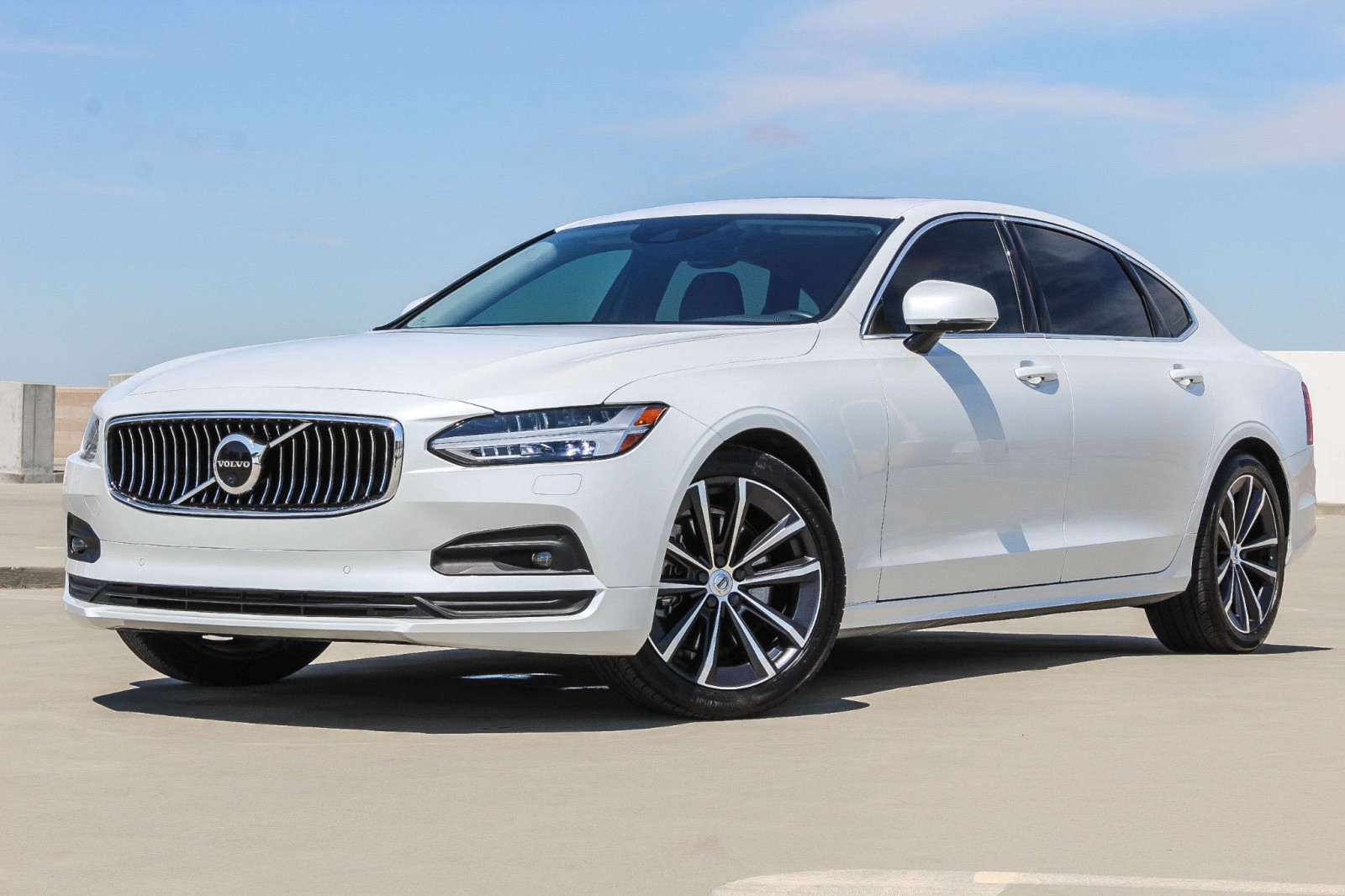
2. Volvo S90
The Volvo S90 exemplifies Scandinavian design principles—clean, functional, and inherently human-centered. Its front seats are arguably the best example of this ethos, particularly due to the electrically adjustable leg extensions built into the seat base. While most people associate Volvo with safety innovations, those who’ve spent hours in the S90 will tell you its commitment to comfort is equally profound.
Volvo’s leg extender is part of the company’s Ergonomically Contoured Seats, which were developed with input from orthopedic specialists. This collaboration ensures the seat structure promotes healthy spinal posture, optimal pressure distribution, and circulation support.
The thigh extender is an integral component of this system, offering forward-sliding support that eliminates the dangling-leg syndrome many tall drivers face in less accommodating vehicles.
Unique to the S90 is how naturally the leg extension operates within the broader comfort features. The seat tilt and height are electronically adjustable and work in tandem with the leg extender.
If you raise the front of the seat cushion and extend the thigh pad at the same time, it creates a ‘cradle’ effect, making it feel like your entire lower body is resting in a supportive pocket. This can reduce stress on the hips and promote better blood flow on long journeys.
Another standout factor is the S90’s massage functionality, available in higher trims. The massage mechanism extends into the leg support area, creating a full-body relaxation experience.
The thigh support zone gently vibrates or pulses, helping reduce stiffness and improving alertness for drivers. This is especially helpful during highway drives or long business trips where mental fatigue can become a safety concern.
From a materials perspective, Volvo uses perforated leather, soft-touch plastics, and sustainably sourced materials that feel luxurious but not overbearing. The thigh extension mechanism is quiet and durable, with no lag or clunkiness even after years of use. Owners report little to no mechanical failure or degradation, which says a lot about Volvo’s quality control.
Volvo’s semi-autonomous driving tech, called Pilot Assist, adds yet another layer to the leg extension’s utility. When the car handles steering and speed adjustments on the highway, drivers can fully enjoy the ergonomic seating configuration, including full thigh support, knowing their legs can rest comfortably without constantly engaging the pedals. It’s a smart, relaxing, and health-conscious package.
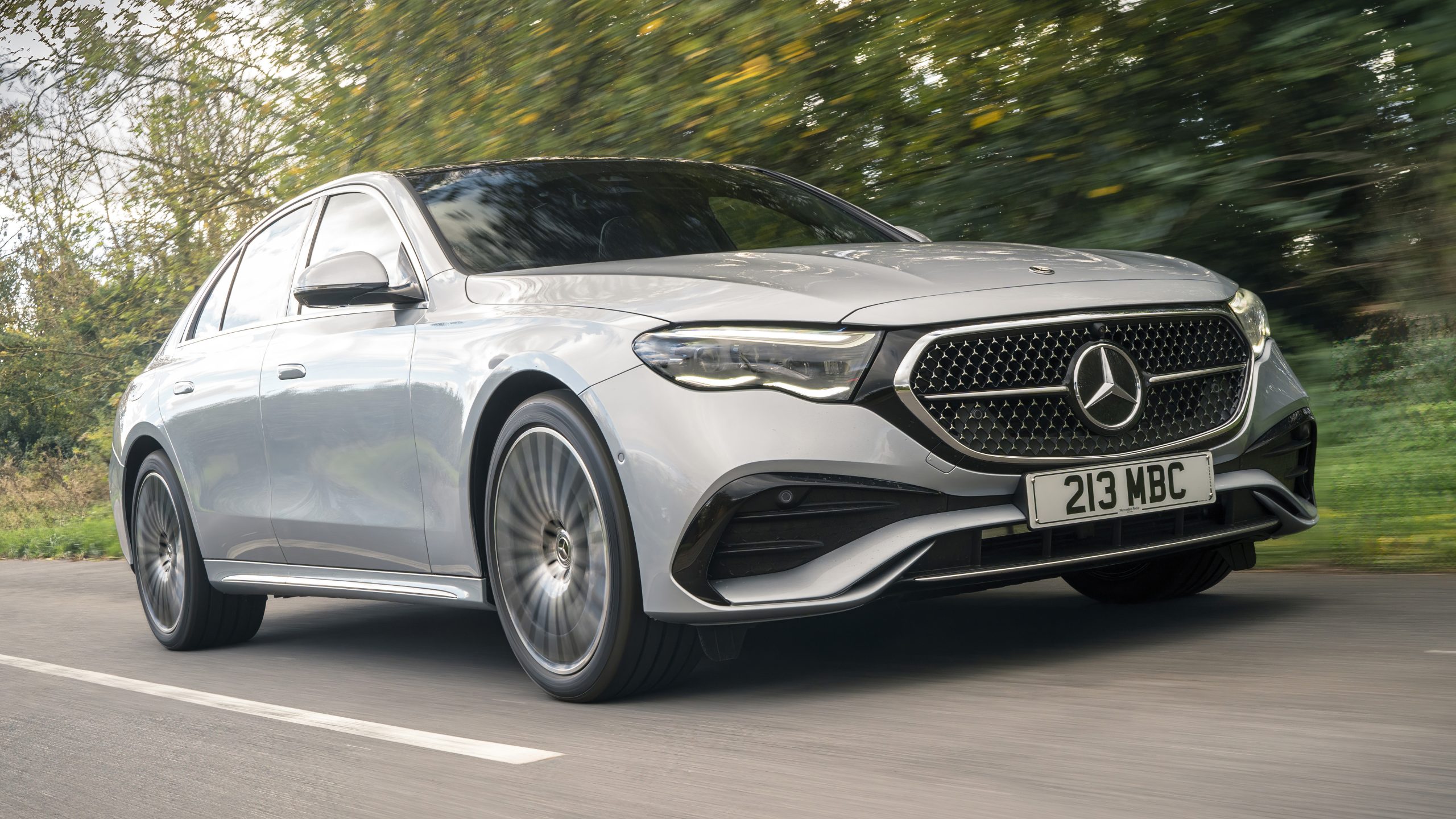
3. Mercedes-Benz E-Class
The Mercedes-Benz E-Class doesn’t simply provide transportation; it delivers an experience. With its Multicontour Seat Package, the E-Class becomes a masterclass in seating comfort, especially for drivers and passengers who prioritize thigh support through adjustable leg extensions.
These powered extenders are elegantly built into the lower seat cushion and are operated with the same intuitive switches that control lumbar and side bolstering.
Mercedes’ thigh support design stands out for its integration and adjustability. The extenders can be moved outward to support longer legs and tilted slightly to adjust the pressure angle.
This attention to biomechanics ensures a neutral, natural posture that feels almost like lounging in a high-end recliner. The result is less tension in the quadriceps and better support under the knees, a common stress point for drivers over six feet tall.
One of the key advantages of Mercedes’ system is how customizable it is. The Multicontour seat lets you fine-tune individual seat zones, and the leg extension coordinates with the dynamic lumbar and side bolster controls.
So, if you’re cornering at speed or taking a long-haul highway cruise, the seat adapts to hold you in place while relieving pressure points. This dynamic adaptability makes the E-Class a superb option for both performance-minded and comfort-focused drivers.
Comfort extends to the materials used throughout the cabin. Mercedes offers genuine leather, open-pore wood, and ambient lighting that reduces eye fatigue.
The thigh extender doesn’t just feel solid—it also holds its shape well, resisting sag and wear even under constant use. For executives, chauffeurs, or retirees, this feature can dramatically improve the in-cabin experience.
The cabin layout is also designed to encourage good posture, with excellent pedal spacing, a tilt/telescoping wheel, and well-positioned armrests.
These factors all work synergistically with the leg extension. Mercedes also includes a memory function that stores seat and extender positions for multiple drivers, reducing the need for constant adjustment.
Finally, the E-Class cabin is whisper-quiet thanks to Mercedes’s acoustic engineering. When paired with a supple ride, high-resolution displays, and active safety systems, the leg extension transforms the experience from simply “driving” to “gliding.” It’s comfort with no compromises.
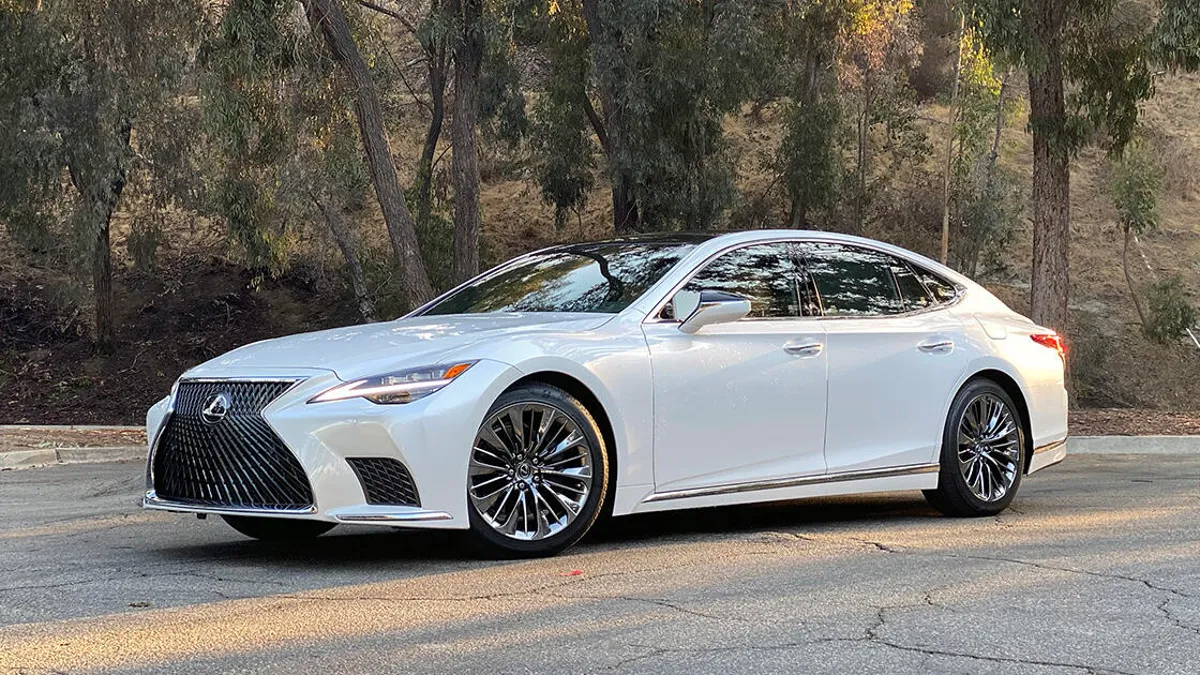
4. Lexus LS 500
The Lexus LS 500 is Toyota’s flagship for a reason—it combines exceptional craftsmanship, advanced tech, and unmatched comfort.
Chief among its many highlights is the 28-way adjustable front seat, which includes a power-operated leg extension that sets a high bar for the luxury segment. It’s not just an added comfort feature—it’s an essential part of the LS’s holistic ergonomic design.
Lexus didn’t just build a longer cushion and call it an extender. The LS’s thigh support can move independently, angle-adjust, and memorize position based on driver’s profile. Whether you’re tall or average height, the extender slides smoothly and doesn’t create a drop-off point where your thighs feel unsupported. Instead, the seating configuration is sculpted to feel like one fluid, seamless surface.
Adding to its value is how the thigh extender is integrated with ventilated and heated seating elements. On cold mornings or hot afternoons, your entire lower body remains temperature-regulated. This kind of detail shows Lexus’s dedication to a “total comfort” philosophy, where even your thighs receive the same level of luxury attention as your back and shoulders.
What truly elevates the LS 500, though, is the “Takumi” craftsmanship embedded in its seat construction. The foam density is carefully layered to allow a degree of compression without bottoming out, especially under the thigh.
This eliminates soreness even after extended drives. The stitching, materials, and even how the cushion tapers into the leg support are all obsessively engineered.
Technology further enhances the experience. The Lexus Interface system lets users program individual driver profiles, which include seat adjustments down to the leg extender.
That means every time you get in the car, your ideal setup—including thigh support—is ready before you even touch the controls. This level of personalization reinforces Lexus’ position in the ultra-luxury comfort space.
Paired with the LS’s serene cabin, air suspension, and road noise isolation, the leg extension becomes more than a comfort add-on—it becomes a therapeutic tool. For professionals who frequently drive long hours or older buyers seeking reduced strain on joints, the LS 500 delivers a best-in-class experience.
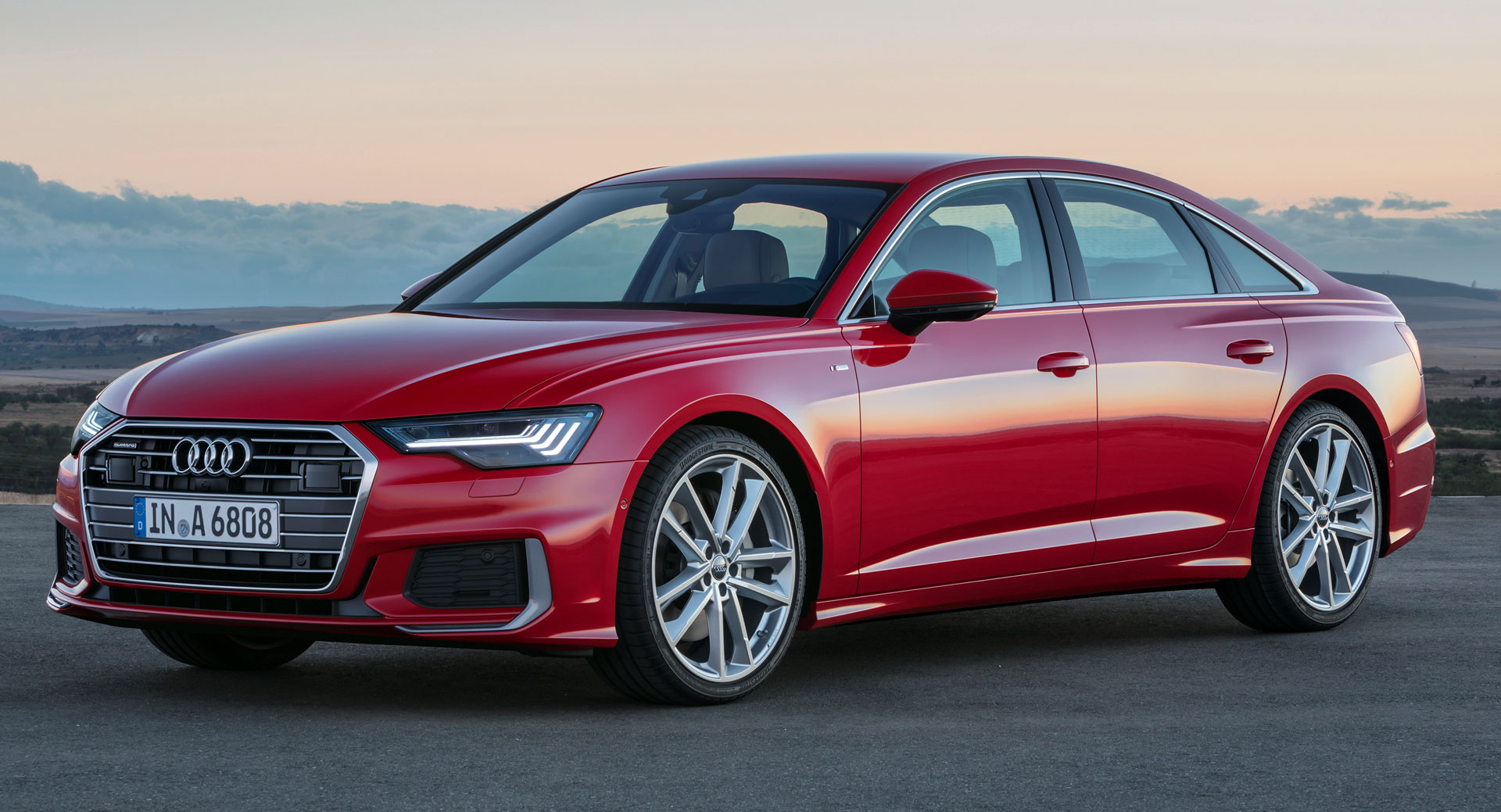
5. Audi A6
Precision, minimalism, and functionality define the Audi A6, and the inclusion of power-adjustable thigh extensions in its upper trims exemplifies these values.
Offered through the Individual Contour Seat Package, the thigh extender provides targeted support for those long highway hauls or short, frequent commutes. As with all things Audi, the operation is quiet, smooth, and impressively subtle.
What distinguishes Audi’s leg extension mechanism is its incremental adjustability. Unlike fixed-position designs, Audi allows the driver to move the thigh pad forward in millimeter-scale increments, allowing for ultra-fine control.
This precision is invaluable for achieving the kind of lower-body posture that prevents leg strain and hip stiffness, especially in drivers who are over six feet tall or suffer from lower-limb fatigue.
The seat foam itself is a highlight. Audi uses a high-density, multi-layer construction that supports the leg without compressing too much under weight.
This makes the extension pad feel firm yet forgiving, a balance that many competitors struggle to achieve. Over long distances, this consistent support can make a huge difference in comfort and alertness levels.
Another strength lies in the design integration. The extension pad doesn’t look or feel like an afterthought. It blends perfectly into the rest of the cushion and uses the same leather grain and stitching pattern, maintaining both aesthetic cohesion and tactile comfort. This adds to the perception that the Audi cabin is a single, unified space of intelligent design.
The A6’s driving position is also near-perfect. The pedals, wheel, and seat align naturally, and with the extender out, your legs feel perfectly angled.
Audi’s MMI system allows for memory storage of your seat position, ensuring your custom thigh extension length is saved along with lumbar and recline settings.
Ultimately, the Audi A6 proves that comfort and performance can exist in harmony. The leg extension feature is just one of many thoughtful design touches that make the A6 a true contender in the luxury mid-size segment, especially for drivers who understand the difference a few inches of extra support can make.
5 Sedans with Flat Cushions for Optimal Comfort
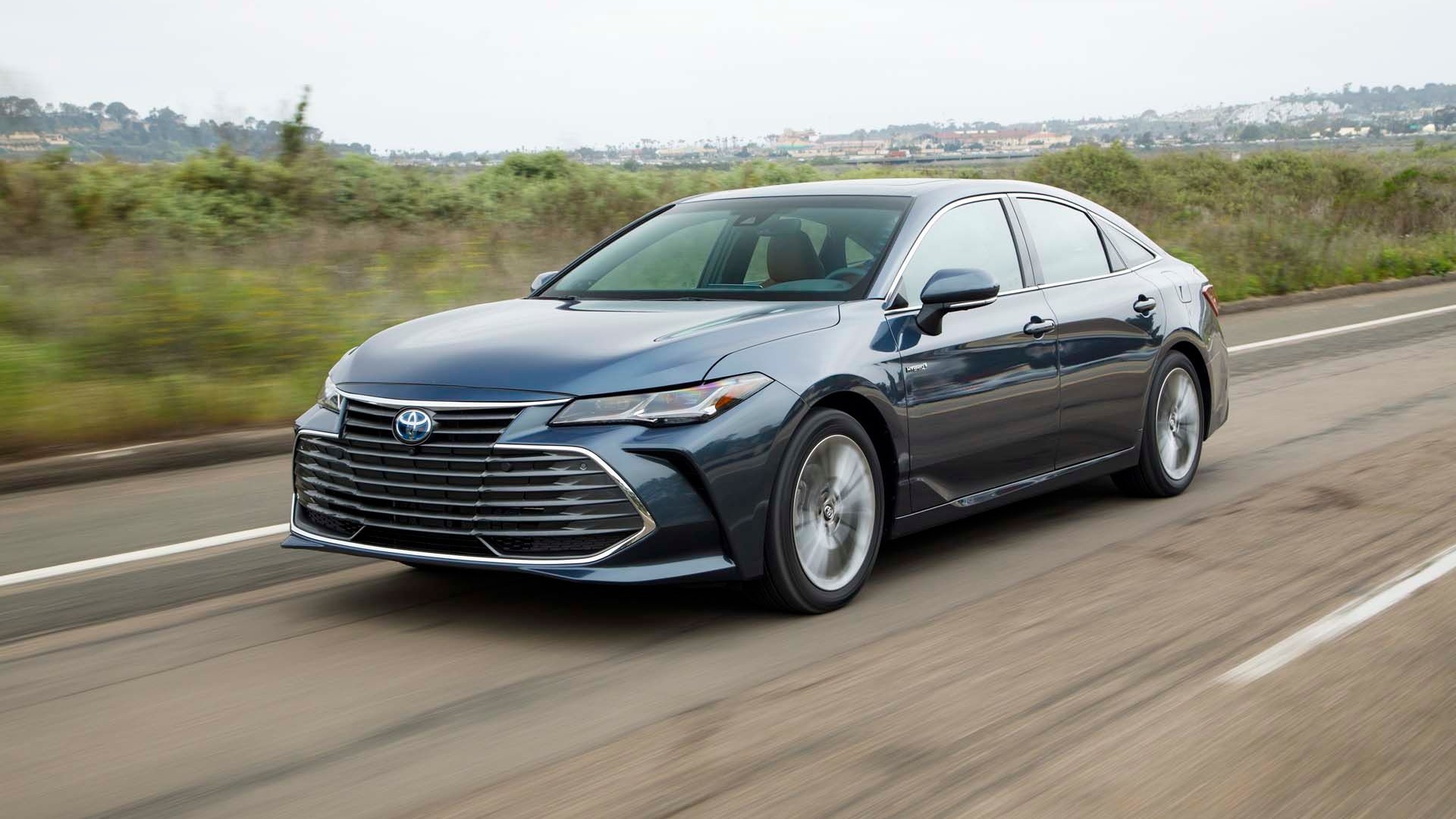
1. Toyota Avalon
The Toyota Avalon has long served as Toyota’s flagship full-size sedan in the U.S. market, and one of its most underappreciated features is its seating comfort, particularly the broad, flat seat cushions.
Unlike many sport-focused sedans that opt for heavily bolstered bucket seats, the Avalon caters to those who prioritize ease of entry, exit, and long-distance riding posture over aggressive cornering support. This makes it an ideal choice for older drivers, road trippers, and anyone seeking “armchair-style” comfort in a full-size car.
The front seats in the Avalon are generously padded with a uniform foam structure that resists excessive contouring. This uniformity across the seating surface distributes pressure more evenly across the thighs and hips.
For drivers with larger builds or those who dislike the restrictive feeling of thigh or side bolsters digging into their legs, the Avalon’s seat architecture is a breath of fresh air. The design encourages a more natural posture, especially for those who prefer sitting with their knees at a lower angle.
Another benefit of the flat cushion design is its compatibility with a wide variety of body types. Narrow seats with deep bolsters can sometimes alienate passengers with wider hips or longer legs, but the Avalon’s neutral seating geometry accommodates almost everyone.
It’s also ideal for those who suffer from sciatica, joint pain, or reduced hip mobility, as it allows for a wider range of motion and leg positioning without obstruction.
The rear seat is equally well-executed, offering nearly bench-like dimensions with minimal sculpting between occupants. While this may not appeal to those who want individualized backseat comfort pods, it works beautifully for families or rideshare applications where versatility and openness are valued.
Combined with the Avalon’s exceptional rear legroom, the flat cushions make long rides enjoyable for all passengers, regardless of where they sit.
Interior materials complement the comfort experience. Toyota equips the Avalon with soft-touch upholstery—either SofTex or leather, depending on trim—that doesn’t become overly hot or cold with the weather.
The flat cushions avoid exaggerated seams or contours that can dig into the legs, further contributing to all-day comfort. It’s clear that Toyota prioritized long-haul ergonomics over flash, and for many buyers, that makes a meaningful difference.
In a market obsessed with sportiness and tight-fitting interiors, the Avalon proudly holds the line for traditional comfort. It’s not trying to impress with racing DNA—it simply wants you to get to your destination relaxed, well-seated, and fatigue-free. For many, that’s not just enough—it’s ideal.
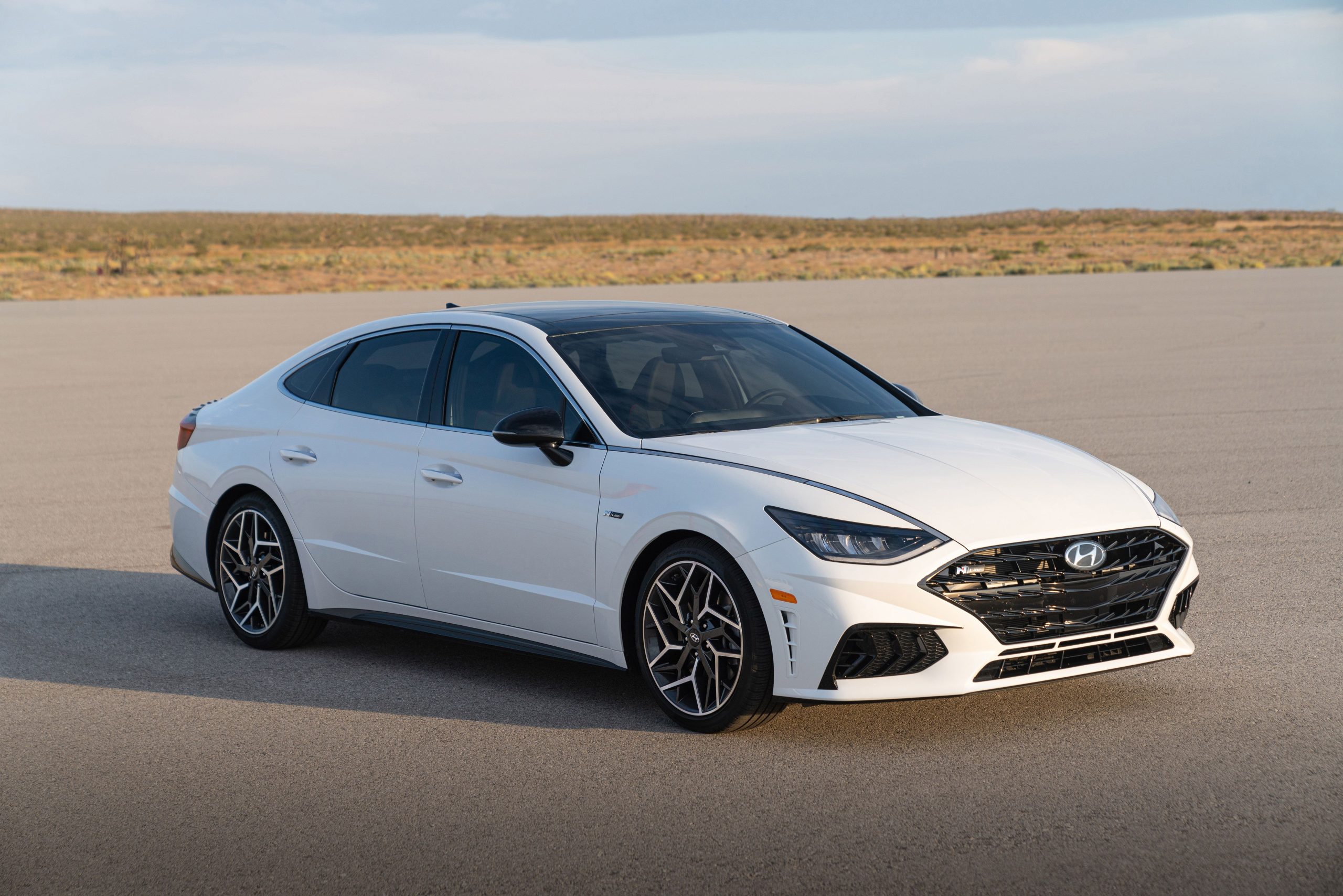
2. Hyundai Sonata
The Hyundai Sonata has undergone a dramatic transformation over the past decade, morphing from an unassuming budget sedan into a genuinely refined, technology-rich mid-size vehicle. Yet one thing that remains true—and deeply appreciated by comfort-conscious drivers—is its flat, generously padded seat cushions.
Rather than cramming its seats with pronounced side bolsters or exaggerated lumbar supports, Hyundai went with a more democratic approach: broad seats that prioritize accessibility and daylong comfort over niche athleticism.
The seat cushions in the Sonata are wide, level, and softly contoured, offering a surface that accommodates various hip widths and thigh lengths without feeling too tight or specialized. This design is particularly valuable for those who dislike the cocooned feeling of sport-style seats or who want the freedom to shift around during long drives.
The padding itself leans on the softer side, providing an almost lounge-chair feel when combined with the relaxed seating angle and gentle recline.
Ergonomically, the flat cushions pair well with Hyundai’s cabin layout. The floor height, steering wheel reach, and pedal placement all support a neutral driving position, and the flat cushion ensures there’s no forced alignment or knee-lock. For individuals with back issues or leg circulation concerns, this arrangement allows for natural movement and reduces pressure points during extended commutes.
In the back seat, the Sonata continues its comfort philosophy with nearly flat bench seats that can easily fit three adults side-by-side. There’s no aggressive bolstering to divide passengers or lock them into position, which makes the car more family-friendly and rideshare-ready.
Taller rear passengers, in particular, benefit from the flatter cushions because it reduce the upward tilt in their thighs—a common cause of leg fatigue in more aggressively contoured rear seats.
Materials and trim quality have also improved substantially in recent generations. Hyundai uses quality cloth, leatherette, and leather upholstery, depending on trim, all of which complement the cushion’s forgiving geometry.
Even after thousands of miles, the seat foam tends to maintain its integrity, avoiding the dreaded “compression zones” that plague firmer seats over time.
With its flat seat cushions, generous cabin space, and soft ride, the Sonata proves that comfort doesn’t need to come at the expense of aesthetics or tech. It offers a calm, welcoming environment for both drivers and passengers—and sometimes, that’s worth more than a few seconds shaved off a 0–60 time.
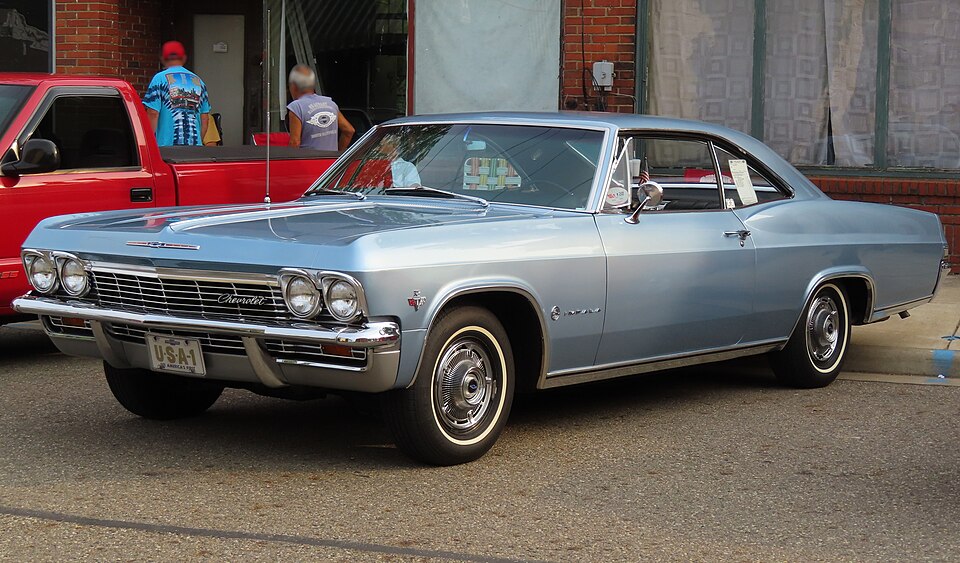
3. Chevrolet Impala
Though now discontinued, the Chevrolet Impala remains one of the most respected full-size sedans when it comes to long-haul seating comfort, thanks in large part to its spacious interior and wide, flat seat cushions.
The Impala was designed with American road-tripping in mind, and its seating layout reflects that intention. It’s the kind of car where you can drive from state to state without needing to constantly adjust your position or stretch out at every rest stop.
The front seats are large, generously proportioned, and minimally bolstered. This simplicity is its strength. The cushions offer even support across the entire thigh and hip area, without pushing the legs inward or squeezing the lower back. For drivers with broader frames or mobility concerns, the open design is a welcome alternative to more aggressive seat profiles in sportier sedans.
One of the Impala’s major strengths is its ride tuning, which complements the flat cushion design. The suspension is tuned for compliance over broken pavement, meaning the seat and chassis work together to absorb road imperfections.
The flat seat cushion helps maintain a stable, level surface during these undulations, reducing body roll and keeping passengers from being jostled unnecessarily.
In the rear, the comfort continues with a wide bench seat that can comfortably accommodate three adults. The rear cushions maintain the flat profile of the front seats and provide ample legroom, which is perfect for long-distance travel or family road trips. There’s no transmission hump in the center, and the low floor height adds to the sense of openness and leg freedom.
The materials used in the Impala’s seats—particularly in the LT and Premier trims—include thick cloth and leather that is both durable and soft. The foam density is medium-firm, ensuring support without sacrificing cushion depth.
Even after years of ownership, drivers often report minimal breakdown in seat integrity, which is a testament to the build quality hidden behind GM’s understated design.
Though it may not wear a luxury badge or boast cutting-edge sports handling, the Chevrolet Impala’s flat cushions and spacious cabin provide exactly what many people want in a car: an easy, comfortable ride with no drama. It is the embodiment of function-first design, and for many, that’s the ultimate form of luxury.
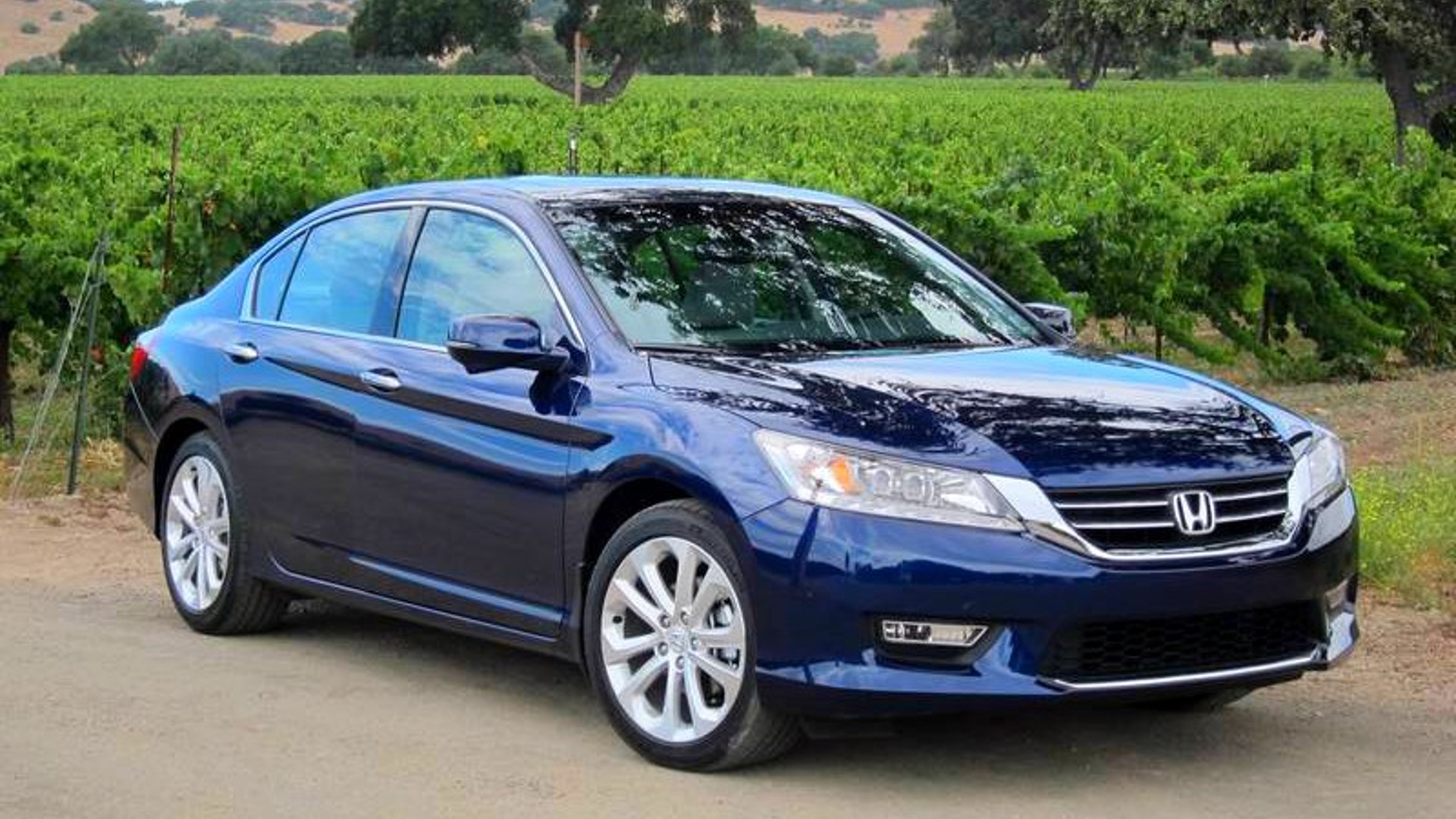
4. Honda Accord (Lower Trims)
While upper trims of the Honda Accord have begun to incorporate more contoured, bolstered seats in pursuit of a premium feel, lower trims like the LX and Sport still retain flatter, more traditional seat cushions—and for many drivers, this is a hidden gem in today’s market.
These seats aren’t trying to be flashy or high-end; they’re simply designed for broad usability and ergonomic neutrality, making them incredibly practical for commuters and multi-driver households.
The flatter seat cushion allows a greater range of motion, which is especially valuable on longer drives. With fewer bolsters locking your legs into one position, you can subtly shift and stretch, which helps maintain circulation and avoid fatigue.
For drivers who prefer more passive comfort—especially those with back or hip concerns—this approach is far more forgiving than the aggressive bucket-style seats found in higher trims or competitor models.
These lower-trim Accord seats also tend to sit higher in the cabin compared to premium models, improving thigh support naturally. Combined with the flat cushion geometry, this creates a more upright, commanding seating posture. It’s especially beneficial for shorter drivers who might struggle with visibility or foot reach in deeper, sloped sport seats.
The rear bench in the Accord is known for being one of the most spacious in the class, and the cushion flatness plays a huge role in that comfort.
While newer sedans often sculpt the outboard rear seats at the expense of the center passenger, the Accord’s flatter design keeps the middle seat usable for adults. There’s also ample legroom, and the door openings make it easy for passengers of all sizes to get in and out.
Honda’s cloth upholstery in lower trims is surprisingly soft and breathable, avoiding the sticky or hot feel that can plague faux leather alternatives. The foam used in the base is also softer than in higher trims, prioritizing cushion and bounce over stiffness and support. It may not feel as taut or “sporty,” but it’s easier on the joints during real-world driving.
Overall, if you value an old-school driving position with minimal fuss and maximum functionality, the lower-trim Honda Accord remains a solid option. It’s practical, accessible, and comfortable without needing premium frills—and sometimes, that’s exactly what makes it so good.
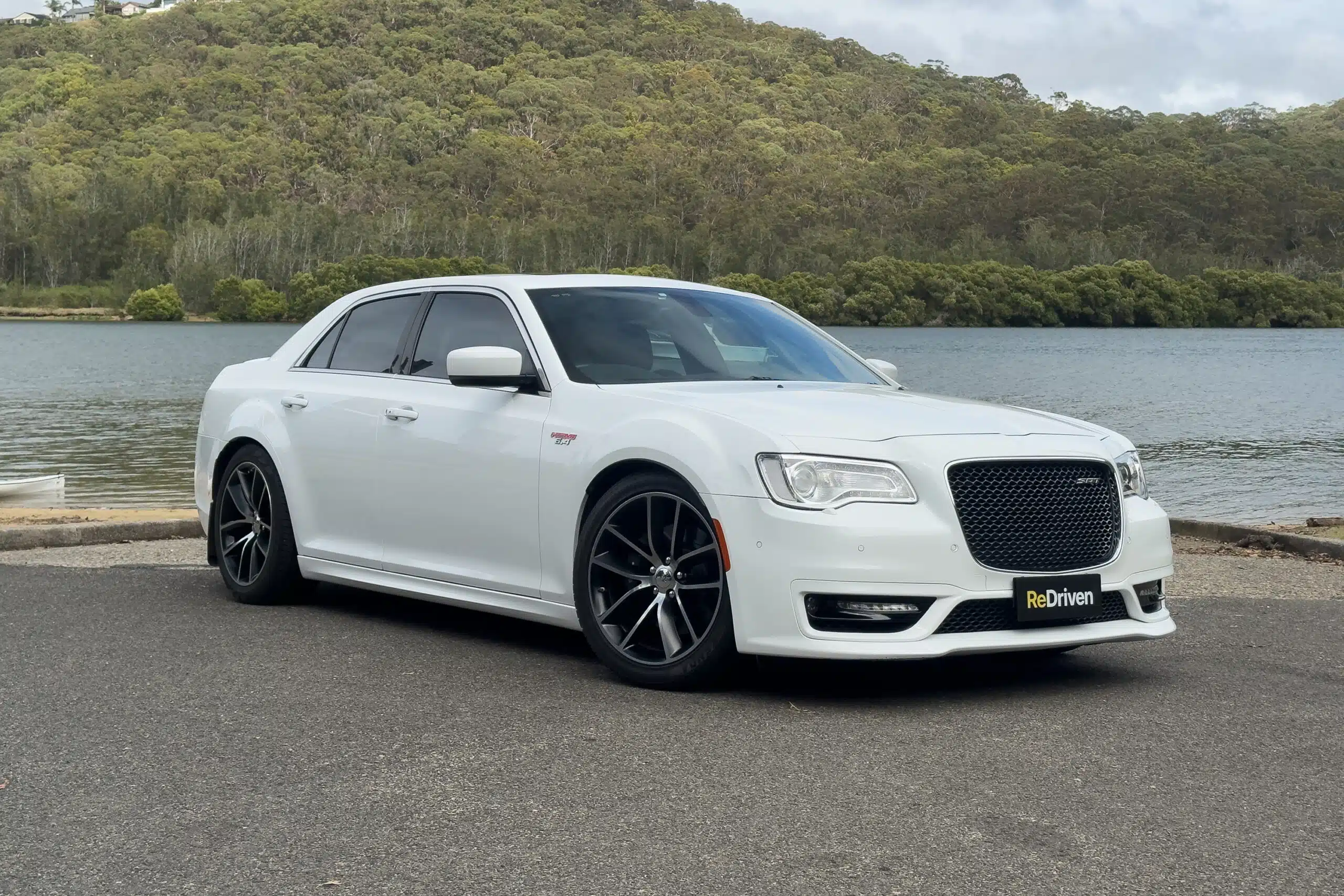
5. Chrysler 300
The Chrysler 300, a throwback full-size sedan with bold American style, also happens to be one of the most comfortable cars for large-bodied drivers and passengers, thanks in large part to its wide, flat seat cushions. Unlike many sedans that try to blend sport and luxury, the 300 leans fully into traditional comfort: big, soft, expansive seats that feel more like home recliners than automotive thrones.
The front seat cushions are flat with minimal lateral support, creating a wide, level surface that supports the thighs without angling them or forcing them into a sculpted contour. This makes the 300 especially suitable for larger drivers or anyone who feels cramped in narrower imports. It’s also appreciated by drivers who frequently get in and out of the vehicle, as the flatness and openness reduce friction and hip strain.
There’s a surprising amount of vertical cushion travel as well. The power seats offer height, tilt, and lumbar adjustments, allowing the driver to find a sweet spot that doesn’t rely on deep bolsters for positioning. This works beautifully for people with joint issues, as it promotes natural spinal alignment and knee angle, especially when combined with the upright dashboard layout.
In the rear, the bench-style seating with flat cushions continues the theme. There’s so much room between the front and back seats that even tall adults can fully stretch out. The flat bench also helps accommodate three adults more comfortably than most mid-size or compact sedans, which often sculpt their rear seats too aggressively for utility.
Material quality varies by trim, but even base models get plush foam with vinyl or cloth surfaces that resist compression and wear. Higher trims add supple Nappa leather, which pairs beautifully with the thick padding underneath to create a seat that doesn’t just look luxurious—it feels like a living room armchair. The foam used in the seat base doesn’t compress quickly, meaning the flatness is retained over time.
Ultimately, the Chrysler 300 is unapologetically old-school in its comfort execution. It’s big, soft, and easy to live with. For those who’ve grown weary of narrow, contoured “Euro-style” seats, the flat cushions of the 300 offer a welcome return to American-style sedan luxury.
Also Read: 5 Used Cars That Dealers Are Paying Top Dollar For and 5 They Won’t Touch
Reclaiming the Lost Art of Comfortable Driving
As we’ve explored in this deep dive into modern sedan comfort, the architecture of a car seat is far more than an afterthought—it’s a fundamental piece of the driving experience. It is, quite literally, where your body resides for potentially thousands of hours every year.
Yet despite this significance, comfort-related features such as leg extenders and flat cushions are often hidden in the background of brochures and spec sheets, overshadowed by the glamor of turbocharged engines, touchscreen sizes, or wireless integrations.
This article set out to re-center that focus, because the reality is, no screen or performance metric can compensate for the physical fatigue caused by poor seat design.
We began with sedans featuring the best leg extension seats—a must-have for taller drivers and those who endure lengthy drives. These vehicles stand apart due to their ability to deliver a tailored fit beneath the thighs.
The presence of manually or electronically extendable thigh supports, highly adjustable power seats, and often multi-way lumbar systems means that drivers can truly find their sweet spot.
These aren’t just luxury gimmicks—they’re orthopedic necessities for people who demand proper support. Brands like BMW, Volvo, and Genesis demonstrate how this feature can be artfully executed, combining luxury and functional biomechanics.
In Part 2, we turned our attention to sedans that offer flat seat cushions, a feature that benefits a much broader range of users. Whether you’re someone who dislikes tight side bolsters or needs a seat that doesn’t aggravate a medical condition, flat cushions are a godsend.
They offer freedom of movement, reduce pressure points, and promote circulation over long distances. Brands like Toyota, Chrysler, and Hyundai have remained loyal to this classic, comfort-first approach—even as the market trends toward aggressive seat sculpting in pursuit of a sportier image.
What’s striking across both categories is that comfort comes in different forms, but it always comes from thoughtful design. Leg extenders are a nod to customization and precision, while flat cushions celebrate universality and inclusion.
Both approaches serve as quiet reminders that not all drivers are built the same, and not all comfort needs can be met with a one-size-fits-all seat. It’s refreshing to see manufacturers still paying attention to these details, especially in a segment like sedans that is often considered to be in decline amid the SUV boom.
But perhaps the greatest takeaway here is not just which cars offer these features, but how much of a difference they make in daily life. If you’ve ever arrived at your destination feeling sore, stiff, or fatigued, there’s a good chance your seat—not the road—was to blame.
And if you’ve ever felt relief simply from being in a car that “fits” your body better, then you already understand how transformative these features can be. Good seat design isn’t a luxury—it’s a necessity that every driver deserves.
In an era where comfort is often sacrificed for aesthetics, it’s encouraging to know that some automakers still understand that a sedan should feel like a sanctuary.
Leg extenders and flat cushions aren’t just premium options—they are essential components of a healthier, more human-centric driving experience. As consumers, we should demand more from our car seats—because in the end, true luxury is the kind you can feel in your bones.

